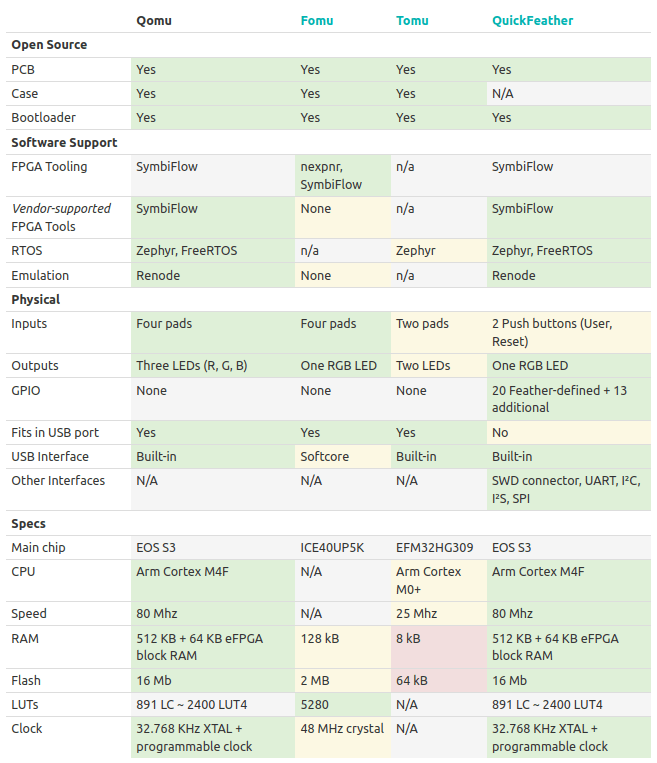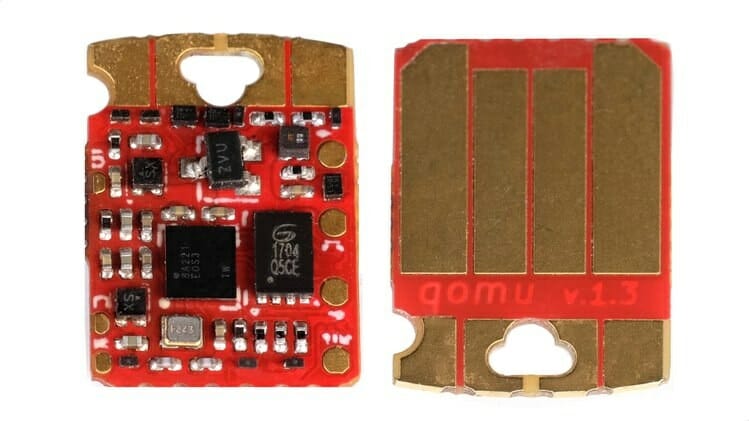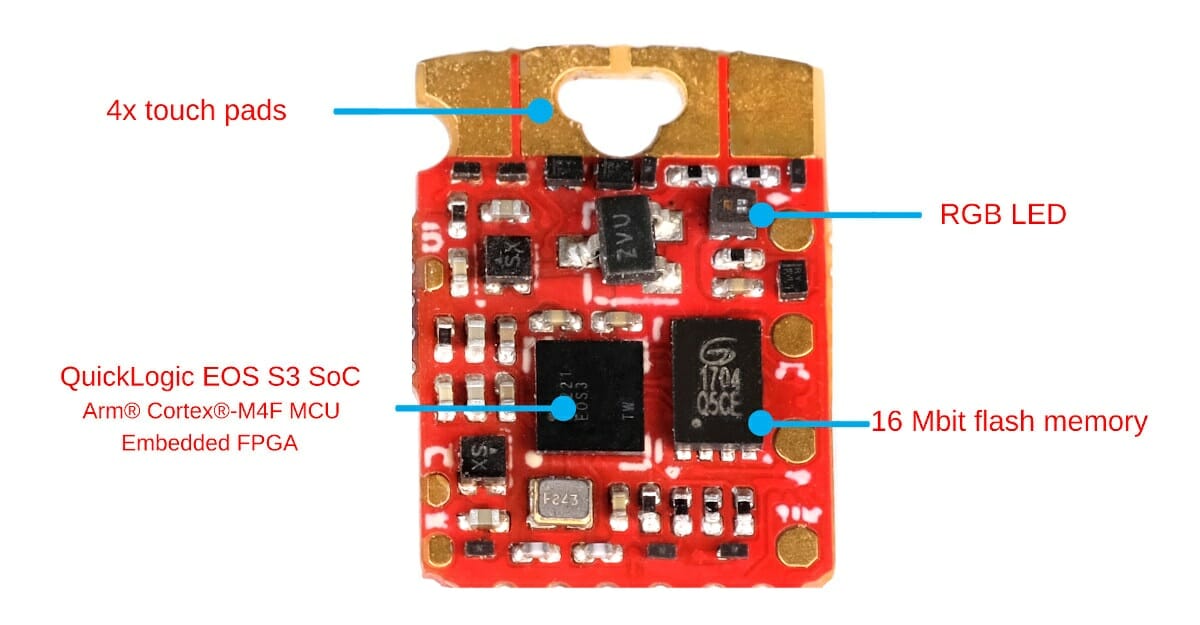We’ve seen several tiny “omu” USB boards that are the size of a USB connector in the past, starting with Tomu based on Silabs EFM32 Arm-Cortex-M0+ MCU, then Fomu enabling Python programming and RISC-V softcore on a Lattice ICE40 FPGA, and finally Somu FIDO2 security key.
There’s now the new Qomu board based on Quicklogic EOS S3 Cortex-M4F MCU with embedded FPGA. Just like its predecessor, the board almost completely fits in a USB connector except for the touch pads, and also happens to be programmable with Symbiflow that dubs itself as the “GCC of FPGAs”, as well as other open-source tools.
Qomu specifications:
- SoC – QuickLogic EOS S3 Arm Cortex-M4F MCU @ up to 80 MHz with 512 KB memory, embedded FPGA with 2,400 effective logic cells and 64 Kbits of embedded RAM
- Storage – 16 Mbit flash
- Misc – Four capacitive touch pads, 1x RGB LED
- Power – 5V via USB port
Qomu board will ship with an injection-molded case and is entirely open-source hardware with the KiCad hardware design files and Gerber files available on Github, and upstream Zephyr or FreeRTOS open-source real-time operating systems running on the Cortex-M4F core of EOS S3 SoC.
As mentioned in the introduction, even the FPGA design tools used with Qomu are open-source, including SymbiFlow tools for synthesis, place and route, and bitstream generation, as well as nMigen support for a Python-to-FPGA design, and full device emulation with Renode.

Qomu has just launched on Crowd Supply with a symbolic $1 funding target. There’s only one reward: Qomu board with enclosure for $40. Shipping adds $8 to the US, and $16 to the rest of the world regardless of the quantity purchased. Shipping is scheduled to start in May 2021.

Jean-Luc started CNX Software in 2010 as a part-time endeavor, before quitting his job as a software engineering manager, and starting to write daily news, and reviews full time later in 2011.
Support CNX Software! Donate via cryptocurrencies, become a Patron on Patreon, or purchase goods on Amazon or Aliexpress







What do the different colours in the table mean? I guess nothing much, else why is 16Mb green and 2MB yellow? SymbiFlow once grey once green? M bit confused 🙂
Never heard of EOS S3 so fag soundds very interesting, but id say the feather form factor suits this SOC much better.
Try a little harder.
A spy device ?
?
I got a capcha navigating from mewe to here. WTF is that
It’s Cloudflare “Under Attack Mode”. My website was overloaded yesterday, this helped a bit, and it will be temporary.
Another open source board with a chip you can’t get anywhere
Speechless…
Not even their distribution partners have anything else than the feather in their inventory. Not a single sample can be ordered anywhere.